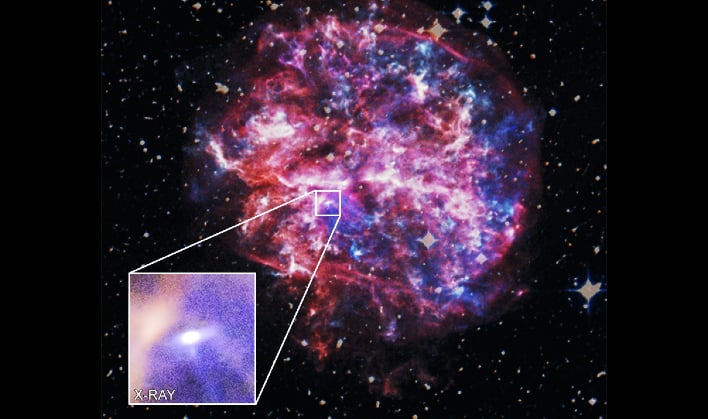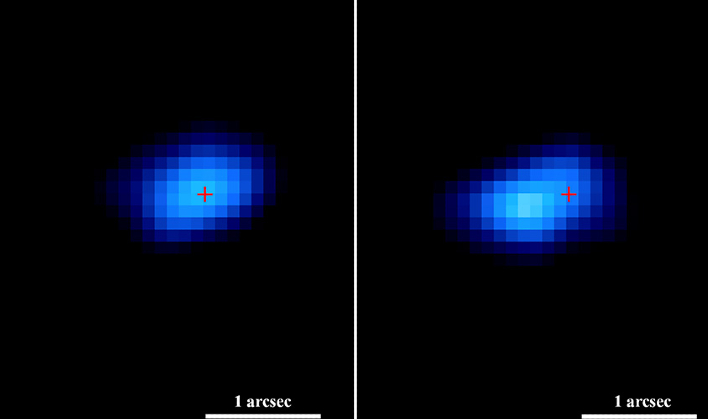NASA's X-Ray Speed Trap Catches A Neutron Star Speeding Through The Milky Way At 1.4M MPH

The stellar speedster captured by Chandra is one of the fastest objects of its kind ever seen, according to a statement released by NASA this week. The space agency used an image from 2006 and then compared it to another image captured a year later to determine its speed. The result will help astronomers learn more about how some of the larger stars end their lives.
A pulsar is a "rapidly spinning neutron star that is formed when some massive stars run out of fuel, collapse, and explode," according the to statement. The pulsar that was captured by Chandra was seen speeding through the remains of the supernova explosion that created it, known as G292.0+1.8. It is located some 20,000 light years from Earth.

The team was able to estimate the speed of the young pulsar by measuring the change in position between the two images taken ten years apart. They estimate that it is traveling at a break neck speed of at least 1.4 million miles per hour from the center of the supernova remnant.
"We only have a handful of supernova explosions that also have a reliable historical record tied to them," stated co-author Daniel Patnaude, "so we wanted to check if G292.0+1.8 could be added to this group."
Along with discovering more about the age of G292.0+1.8, the team also learned about how the supernova gave the pulsar its "powerful kick". The team believes there are two possibilities, both involving material not being ejected by the supernova evenly in all directions. The first possibility is that neutrinos created in the explosion are ejected from the explosion asymmetrically. The second is that the debris from the explosion is ejected asymmetrically.
"This pulsar is about 200 million times more energetic than Earth's motion around the Sun," explained co-author Paul Plucinsky. "It appears to have received its powerful kick just because the supernova explosion was asymmetric."
Top Image Credit: X-ray: NASA/CXC/SAO/L

